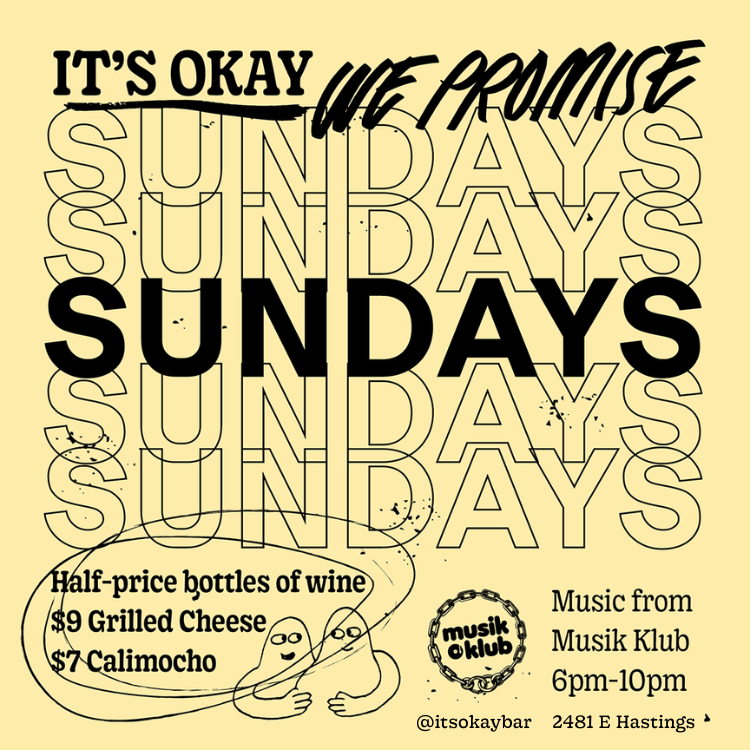By Altaira Northe
@ctraltaira
Therapy. Everyone should try it at least once. But what a lot of people don’t know is that therapy comes in a lot of different shapes and sizes. Over the years, I’ve tried a wide range of therapies, and they’ve all helped in different ways at different points in my healing.
Talk Therapy
Talk therapy is exactly what it sounds like. You go to a therapist; you talk and they listen.
I don’t remember what prompted me to go to therapy for the first time. I was in my early 20s, in university, and my brother had told me about a free therapy service. The only thing that I remember from my intake appointment was the therapist telling me that to access the services, I needed to be impacted by addiction or alcoholism and I burst into tears. “But that means that I don’t qualify.” I didn’t know what to do, because I couldn’t afford therapy, but I needed it so badly.
“Aren’t you so-and-so’s sister?”
“Yes, why?”
“You most definitely do qualify.”
Sometimes when you come from an abusive family, it takes other people telling you what’s normal before you realize that something was wrong. I knew that my dad had been violent and aggressive throughout my childhood, but he wasn’t the classic alcoholic you see in movies. He drank quietly, in private, and then this spilled out as rage towards our family, and the world at large.
This first round of talk therapy was a light uncovering. I would tell my therapist about some family experience as a child, and she would tell me how that was not normal; that it was not my fault. Over and over again. I tend to think of talk therapy as a release and re-orientation. Especially if you’ve been gaslit for years, or had to struggle through something, just having another person tell you that your feelings are valid, and that what you went through is hard can be extremely comforting and healing. And, while talk therapy is incredibly useful, for me, I needed to try something else to take me further along in my process.
Mindfulness, Cognitive Behavioural Therapy, and Acceptance and Commitment Therapy
These three therapies are all slightly different, but in my mind, they serve similar purposes. They’re also linked for me, because I used all of these tools during the same time with the guidance of a therapist. They each have, at their core, some aspect of 1) reframing negative and intrusive thoughts, 2) being present and letting go of upsetting thoughts and feelings, 3) learning to decouple negative experiences from persistent negative feelings associated with them, and 4) learning how you link thoughts, moods, experiences, and feelings.
My therapist had me pick up a few workbooks to help me with the process: “Get out of your mind and into your life,” “Mind over mood,” and “The Mindful Way.”
The main thing that I remember about this work was keeping an anxiety journal. When I was feeling anxious, I would write down the experience I was having, how it was making me feel: evidence that supported the anxious thought, and evidence against it.
Usually what the evidence said was that the thought that I was feeling anxious about actually held no weight.
Another tactic was doing different grounding exercises to feel present in my body. One of the activities was holding a raisin in my mouth for ten minutes. It may sound stupid, but it’s about being present, feeling, tasting, and experiencing something slowly. I still do both of these types of exercises in my head. If I start to catastrophize, I can think about or write down all of the evidence against my catastrophizing thought. Doing a grounding activity like going for a walk, watering my garden, or making some homemade pasta can also help.
That being said, I do also have mixed feelings about CBT, ACT, and mindfulness. The number of times I’ve had someone who does not understand anxiety and depression tell me to “just think positively” is depressing in and of itself. If it were that simple, wouldn’t I have done it already? At the height of an anxiety attack, I know that the thoughts that I am having are irrational, and sometimes it doesn’t matter how many times you tell yourself that the opposite is true. I do believe that these therapies were helpful, and practicing some of these techniques on a regular basis did undoubtedly help me to start reframing things. But for me, personally, they have their limits.
Somatic Therapy
Somatic therapy is the first therapy that I tried that is based in the body instead of in the mind. I didn’t come to it intentionally; I started seeing a naturopath in Vancouver to talk about how anxiety showed up in my body, and how tired I was all the time, and we tried somatic therapy as one approach. To start off, she had me lay on a table, close my eyes, and start to breathe slowly and deeply. I remember thinking, “I know what meditation is… this is stupid,” but then something changed. She asked me to ground into my feet and then think about if I had any tension in my body. If I did, she asked me what colour and shape the tension had. I would then keep breathing and see if anything came up. I don’t know what to say from here, other than it’s the closest I’ve ever felt to being on drugs without having taken anything. It felt like an out of body experience, and it also felt like witchcraft. In one session, after identifying the shape and colour of my feelings, I spent about 10 minutes sobbing uncontrollably and then letting the root of those feelings float away into the universe. When people say “the body holds trauma,” this is what they mean. For me, somatic therapy was a next step in understanding my healing, and taking some of that healing out of my head and into my body. I haven’t had a somatic therapy session since my naturopath left Vancouver, but writing this has reminded me what a transformative experience it was, and that I’d like to work with somatic therapy again.
Emotional Freedom Technique
Finally, my most recent therapy is the Emotional Freedom Technique. Otherwise known as EFT or tapping. At its base, EFT involves tapping repeatedly on nine energetic points on your body. There are then a few different levels of tapping, one of which is dedicated time with an EFT therapist who guides you through the process, and helps you to explore feelings as they surface. This summer, I did a three-month long EFT intensive with Guilia Halkier, where I had a 90-minute session every week. During an EFT session, you’ll start with tapping and just see what comes up. Your guide will then take you into deeper and deeper tapping sessions, where they’ll incorporate bits and pieces of the feelings and experiences that have come up into your tapping. For example, let’s say you have a belief that you’ll never be loved because you’re too emotional. You might start tapping on the words, “I’ll never be loved. No one could ever love me. I’m just too emotional. Other people deserve love. Even if they’re emotional. But not me.” Then you’ll see what comes up. And eventually this tapping will uncover a deeper belief about why you think you don’t deserve love. And if you keep going, you might also uncover where this belief really came from, and how it might have actually protected you at one point.
In many ways, EFT felt to me like a hybrid between somatic therapy and CBT. I was identifying beliefs that I had that were holding me back, and talking about traumas, but instead of ONLY feeling into my body, or ONLY voicing why this belief was incorrect, EFT felt like it was pulling the reason why this belief was incorrect out from deep in my bones, and then shining a light on how at one time this belief kept me safe, but it was ok to let it go. For example, I’m a people pleaser. I tend to put my own feelings on the back burner, and do what makes sense to make other people comfortable. This rarely works out well for me. And I used to beat myself up over it. Through EFT, I dug into the fact that I’m a people pleaser because both of my parents were incredibly volatile. If I didn’t read the situation and act in a way that would make them happy, it would not go well. I needed this adaptive behaviour to keep myself safe. With CBT, I might have written down how being a people pleaser made me feel, then evidence for and against people pleasing contributing to different feelings in my life. With EFT, I identified the core of this behaviour and then thanked my childhood self for doing whatever it took to get us through, and then let her know that we were safe now, and she didn’t have to people please anymore. It was very comforting and felt nurturing in a way that some of my other therapies had not.
The moral of the story is that it’s important to look at different approaches when it comes to therapy; try things out, and see what resonates the most for you. Of course, sadly, cost and accessibility also play a big role. I would love to dive back into EFT and somatic therapy, but I would take a few talk therapy sessions too if they were covered by my benefits.
Whatever form of therapy you choose, it works best when you’re ready for change, and also ready to get really real with yourself. My sessions were not all revelations about my family and healing. Some of it was really intense work on changing my own behaviours and beliefs that were no longer healthy.
But regardless of your method, I promise you one thing: it will be worth it.

Altaira Northe is a writer who works and lives in Vancouver, B.C. with her partner and her two cats. She loves hiking in the mountains and swimming in the ocean. She spends her time writing, running events that bring people together, and working to heal her intergenerational trauma. She can be found on all social channels @ctrlaltaira.




